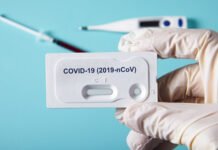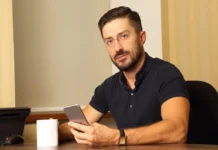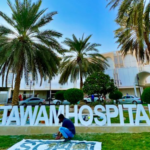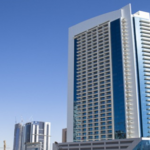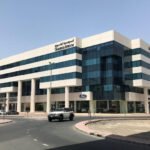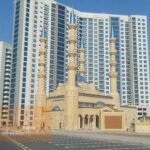Dr. Saniya Habboub: Lebanon’s Quiet Revolution in White Coats
In 1931, a Lebanese woman stepped onto a stage in Pennsylvania bearing an American medical school diploma as the first Arab graduate. The crowd broke into applause, but for Saniya Habboub, the applause rang out in the streets of Beirut, where doors had been shut for women like her for centuries. Entering this profession at the time meant resisting familial expectations, enduring societal pressure, and potentially risking her own health. She found a way forward. But what inspired her? It was a mother’s whispered promise on a train, a father’s quiet encouragement, and a fire found deep within her soul that refused to go out.
This article follows her footsteps from the markets of Beirut to Lebanon’s frontlines of healthcare, showing how the grit of one doctor changed pathways for many women after her – and continues to do so.
Roots in a Changing Beirut
Saniya Habboub was born in 1901, in the lively Ain Mreisse neighborhood of Beirut, where the aroma of leather tanneries converged with the sound of the call to prayer. Her father, Mustapha Habboub, a self-made man, was a merchant who built and grew his business with remnants. He hosted poets and intellectuals in their home. As children, Saniya and her siblings were exposed to evenings filled with discussions on literature and reform that sparked their curiosity. Her mother was Adla al-Jazairy, a Turkish woman who was illiterate, and the lack of education gave her extra motivation. On the train ride from Istanbul to Beirut, she had observed a European lady read a newspaper and vowed to her husband, “if I have a daughter, she will do that too”. Saniya, the second of five children, was the fulfillment of that promise.
Not all of Saniya’s experiences were mind-expanding. When she was 14, typhoid fever hit like a ton of bricks. For a full month, Saniya lay in and out of consciousness, and then awoke only to discover that her younger sister, Afifeh, had passed while lying in the other bed. The fever left a permanent mark, namely phlebitis in her left leg, which caused her to drag her foot for the rest of her life. But rather than retreating, those early blows appeared to harden her resolve. After Saniya received Quran lessons at home, she then secured a spot at the American School for Girls, one of the only available venues for someone with her intellect to flourish.
By the age of 16, Saniya had a pull back to tradition. She was married to a neighbor, a doctor, not exactly arranged, as he sought the permission of her parents to marry first. They were only married for two years, and the built-up tension with her mother-in-law led to the divorce, though they remained on good terms. After the divorce, Saniya enrolled back in an academic place, illustrating that detours did not define her journey.
First Steps Toward the Stethoscope
Beirut in the 1920s buzzed with post-World War I energy. French mandate rule brought new schools and ideas, but medicine remained a man’s domain at places like the American University of Beirut. Saniya joined the freshman class at the American Junior College for Women in 1924, graduating two years later with honors that turned heads. She set her sights on AUB’s medical program, dreaming of healing the community that raised her.
Society had other plans. Whispers of scandal followed women chasing such ambitions, and even her own circle urged caution. But Saniya’s family backed her, her father especially, who saw in her the scholar he hosted at his table. When AUB’s doors stayed closed to female applicants, she looked westward. No Lebanese woman had crossed the Atlantic for a medical degree, but that only made the challenge sharper. In 1929, she boarded a ship for America, the first of her kind to chase that horizon.
Landing in the U.S. meant more than new classrooms; it was a crash course in reinvention. She adapted to a world of bobbed hair and bold conversations, earning nods from American papers for her “occidental ways.” Yet homesickness and the drag of her leg tested her daily. Through it all, she pressed on, her focus laser-sharp on the white coat waiting at the finish line.
Diploma Across the Ocean
America’s medical world opened wide at the Woman’s Medical College of Pennsylvania, a haven for trailblazers since 1850. But Saniya started her formal training at Western College in Cincinnati, Ohio, earning her MD in 1931 amid a class of determined women from around the globe. She stood out not just as the only Arab student, but as a symbol of quiet defiance, her Beirut roots fueling every late-night study session.
The true hard work came next, two years of specialized training at a hospital in Philadelphia in gynecology and obstetrics. To her classmates, her tenacity was awe-inspiring, especially the way she limped and made what often felt like a marathon out of just walking. By 1932, she had completed her training, diploma in hand. She was appreciative; later, she set up a scholarship fund at her medical college to help other women like herself. Her graduation was on June 10, 1932, the same date recognized by Google in a Doodle in 2022, drawing attention to her pioneering role as a doctor to serve the Lebanese community. All personal milestones aside, this moment represented breaking barriers.
That moment wasn’t just a personal victory; it shattered ceilings. Back home, families began whispering her name to daughters eyeing books over veils. Saniya returned in 1933, suitcase packed with knowledge and a resolve to give back what she’d gained.
Clinic Doors Swing Open in Beirut
Beirut welcomed her with skepticism. In Bab Idriss, she hung her shingle for obstetrics and general practice, the city’s pulse beating just outside her window. Patients trickled in at first, mistaking her for a midwife rather than a fully trained physician. But word spread like wildfire, here was a doctor who made house calls, who treated the poor for free, who listened without judgment.
For 50 years, her clinic became a lifeline for women sidelined by poverty or tradition. Expectant mothers from the hills arrived by cart; orphans got check-ups alongside the elite. Saniya’s leg slowed her, but never stopped her from climbing stairs or crossing town. She retired in 1965, yet her hands stayed busy, mending more than bodies.
In 1937, life added new layers. She married Muhammad al-Naqqash, a journalist 12 years her junior, after he profiled her work. Their home is filled with two daughters, blending stethoscopes and story deadlines. Through Lebanon’s turbulent decades, wars, mandates, and independence, Saniya balanced family with a calling that demanded everything.
Hands in the Red Cross, Heart in the Community
For Saniya, medicine was more than just private practice; it was a public service that was interlaced into the fabric of the nation. As a founding member of the Lebanese Red Cross, she had a hand in building this organization from the ground up and was best known for coordinating aid to the country during crises that tested the spirit of Beirut, as floods and earthquakes collided with the scars of conflict. She was there, organizing clinics and providing volunteer training
Saniya’s outreach extended to the Muslim Orphans’ Home, where she was a model of the care that could be provided, mending kids battered by hardship, and the Young Women’s Muslim Association, where she nurtured ambition in girls as well as their health. When she finally returned to work at her old school, the American School for Girls, she institutionalized her role as a resident doctor providing care in hallways as if for mere mortals attending a speaking engagement.
These were not part-time jobs; they were ways for her to multiply her efforts as a doctor into a movement. In 1982, the Lebanese national government pinned the Health Medal of Merit on her chest, recognizing a lifetime of selfless effort with this award after a half-century of work. At 81, and with the same steady gaze as her graduation picture taken so many years ago, she took it not for herself, but to use it to motivate the next day.
Facing Shadows with Steady Grace
No tale of overcoming skips the shadow. In every shift of her leg, Saniya always felt the nagging sensation from that fever she had had in childhood. The turmoil, civil wars, and recession of Lebanon dealt one last blow to her clinic, but she measured out supplies, and in turn hope, in the same way she had in Lebanon’s toughest times. In her final years, pancreatic cancer appeared. She self-diagnosed herself once again, together with the clarity she exemplified to every patient.
She died in September of 1983 at the age of 82, while Beirut remained transformed. And today, a street in Ramlet al-Baida bears her name, Sania Habboub Street, a small salute to a woman who lived in paths untrodden, so others could run straight.
Echoes That Outlast the Years
Dr. Saniya Habboub wasn’t just a physician; she was a prescriber of possibility. Her choices, whether funding scholarships abroad for women she had never met or starting networks of aid for the women of her own community, fanned out to include, and elevate, her sisters, daughters, and dreamers. And, in an area of the world where women’s voices are often barely whispers, she spoke through her deeds: through the free care she offered, for the forsaken; through all of the doors she kicked wide open for the next wave of women that would follow.
Her legacy lives on in each Lebanese woman who now picks up a scalpel, or a textbook; in each of the Red Cross tents that proudly still stand; and, it is recorded within our own memories, Google’s Doodle offered a glimpse into her work and significance, but her legacy is infused within the stones of a city, and intertwined with the stories of its people. Saniya Habboub led the way to showing that one determined step, even when dragged, could cover oceans and change worlds.


